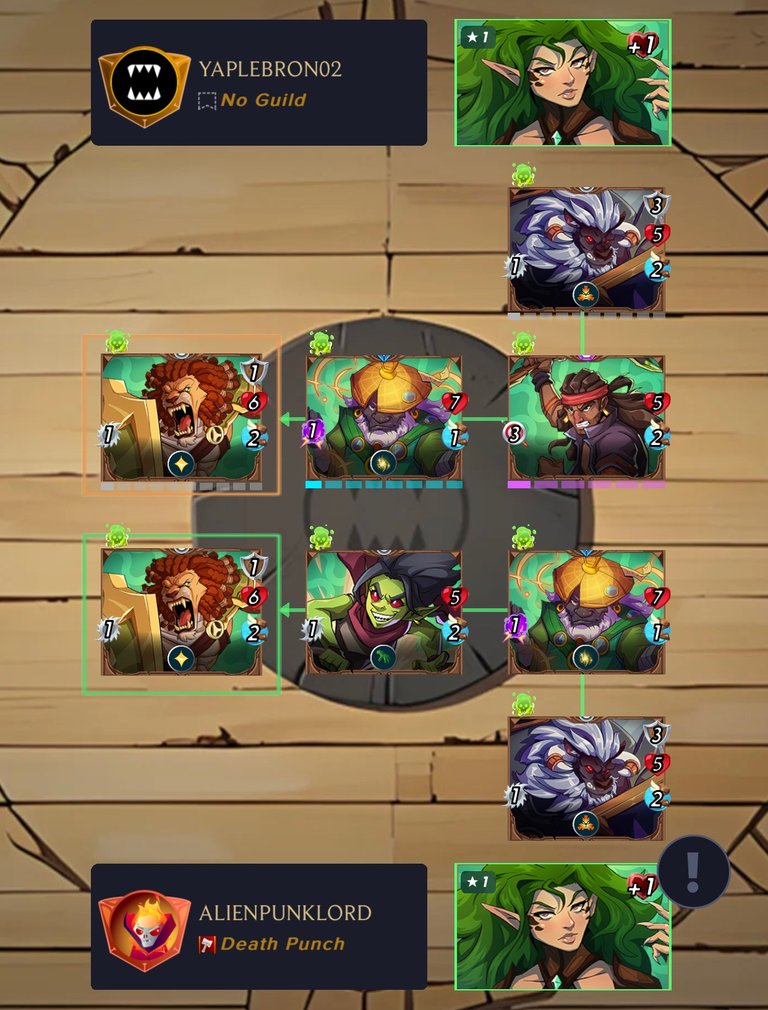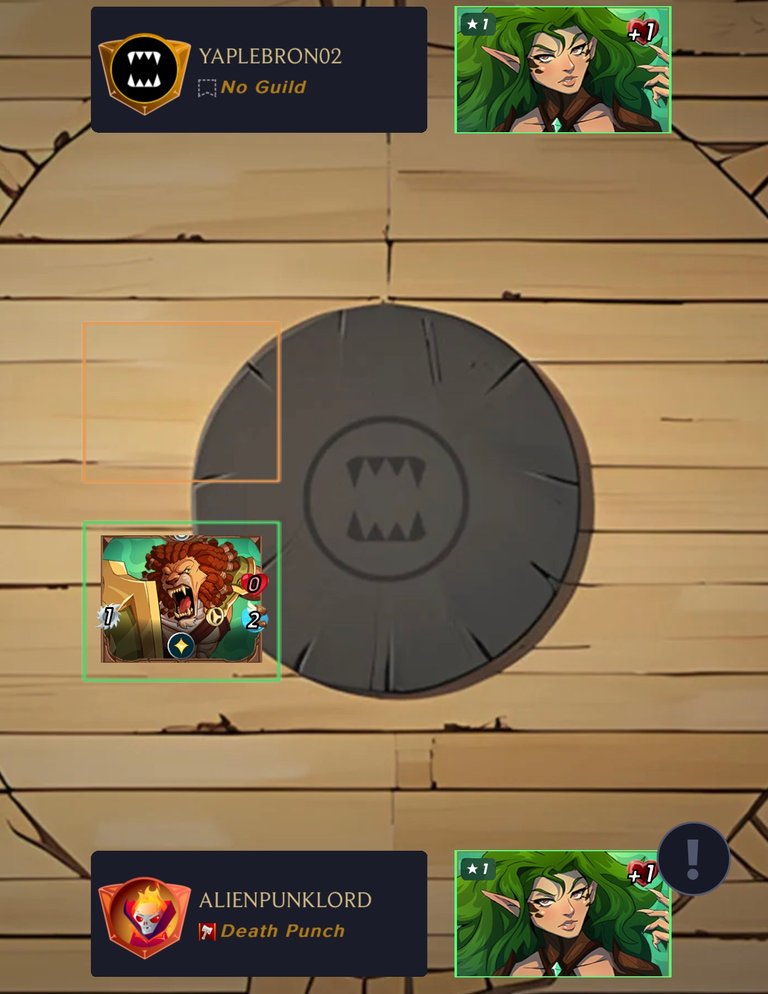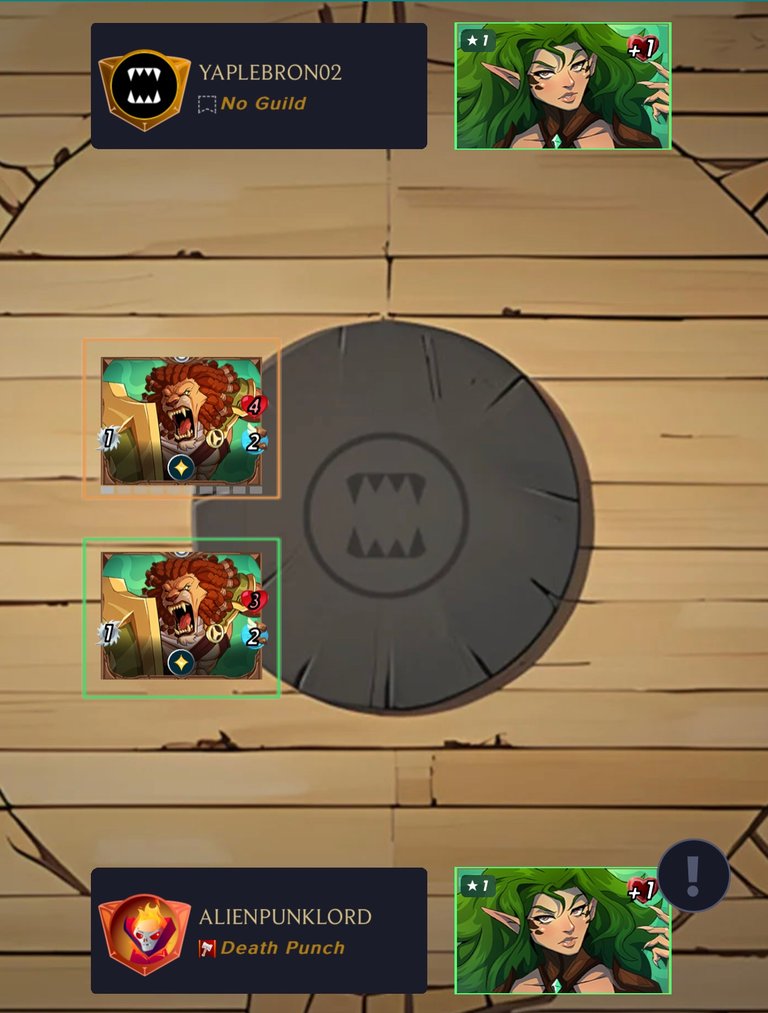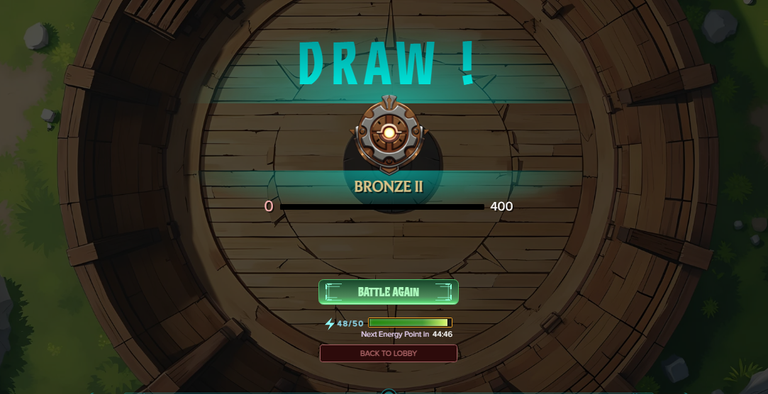Splinterlands Battlefield 🐉 Fadigue X Front Line with the Heal Skill
Before I go on, do you think I should add more original covers to the post?
I mean, I think the featured images are enough, but I could improve if it would comfort my blog readers.
This week, for the community challenge of Splinterlands, I decided to bring a battle that was, to say the least, different for me.
The reason?
It ended in a DRAW. And it wasn’t one of those quick draws, no… it was a long fight, full of poison, and with an ending that felt like “no one can take this anymore, let’s just stop here.” Before explaining how it all happened, let’s understand the rules of this match.

The rule combination was Noxious Fumes and High Five.

High Five: you can summon a maximum of 5 units. This greatly limits your options and forces you to think carefully about your lineup. That is, you must choose wisely, even if you end up with a lot of unused mana points your first three monsters are crucial for victory.

Noxious Fumes: all units start poisoned and lose 2 health at the beginning of each round, starting from round 2.
- Units with Immunity are not poisoned.
- This poison is applied only once so, if a creature is Cleansed, Resurrected, or Rebirthed, it comes back clean.
In other words, you can’t just go for high damage here, you need to think about resistance and healing, because poison doesn’t forgive.
Both my opponent and I chose the Earth element. And, interestingly, our lineups were almost identical.
The only difference was that I placed a melee attack creature in a certain position, while he went for a ranged attack creature.
And of course, we both used tanks with HEAL in this case, the Dread Tafarian, which not only takes a lot of hits but also heals itself every turn.

Right from the start, it was clear this would be a battle of endurance.
The more fragile units started falling quickly due to the poison, even with some healing support. Since we only had 5 monsters and not much room for elaborate strategies, the fight came down to:
Let the poison do the dirty work.
Try to keep the tank alive as long as possible.


The funny thing is that our cards started falling almost in the same order. It was like we were playing mirrored compositions.
In the end, only the Dread Tafarian remained on both sides, each one healing itself every turn. It was literally a “you hit, I heal; I hit, you heal” situation. And the poison? Well, it wasn’t doing the job either, because the heal recovered almost the same as the poison took away.
That’s when one of Splinterlands’ most brutal mechanics came into play: Fatigue.
Fatigue is like the game saying, “okay, you’ve been fighting too long, now you’re really going to feel the pain.”
Each extra turn, all monsters take fixed damage, which increases progressively.
So even if you have healing, there comes a point when you can’t hold on anymore. And that’s exactly what happened:
Turn after turn, both Dread Tafarians held on bravely… until the Fatigue damage became too high.
The result? Draw.


What I liked most about this match was that it showed how Splinterlands is not just about attack and defense, but also about endurance and adaptation. In rules like Noxious Fumes, it’s essential to think about:
Monsters with Immunity, to ignore poison.
Healing sources like Tank Heal, Triage, or Self Heal.
Avoiding low-health units that quickly fall to poison.
In this case, I could have tried a Cleanse to keep some support alive longer, but honestly, since the compositions were so similar, I don’t think it would have made much difference.


In the end, it was a fun battle that made me think more about how poison influences the game. Even without a winner, I think it was worth it for the experience and the lessons learned. And let’s be honest: it’s not every day you see a duel turn into a true endurance marathon, with each turn dragging on and the tension building until the inevitable draw.
Thanks for sharing! - @lenonmc21

@alienpunklord, I'm refunding 0.536 HIVE and 0.110 HBD, because there are no comments to reward.